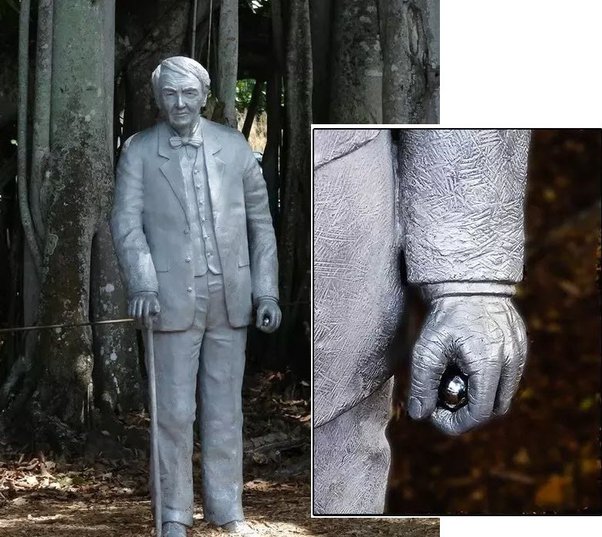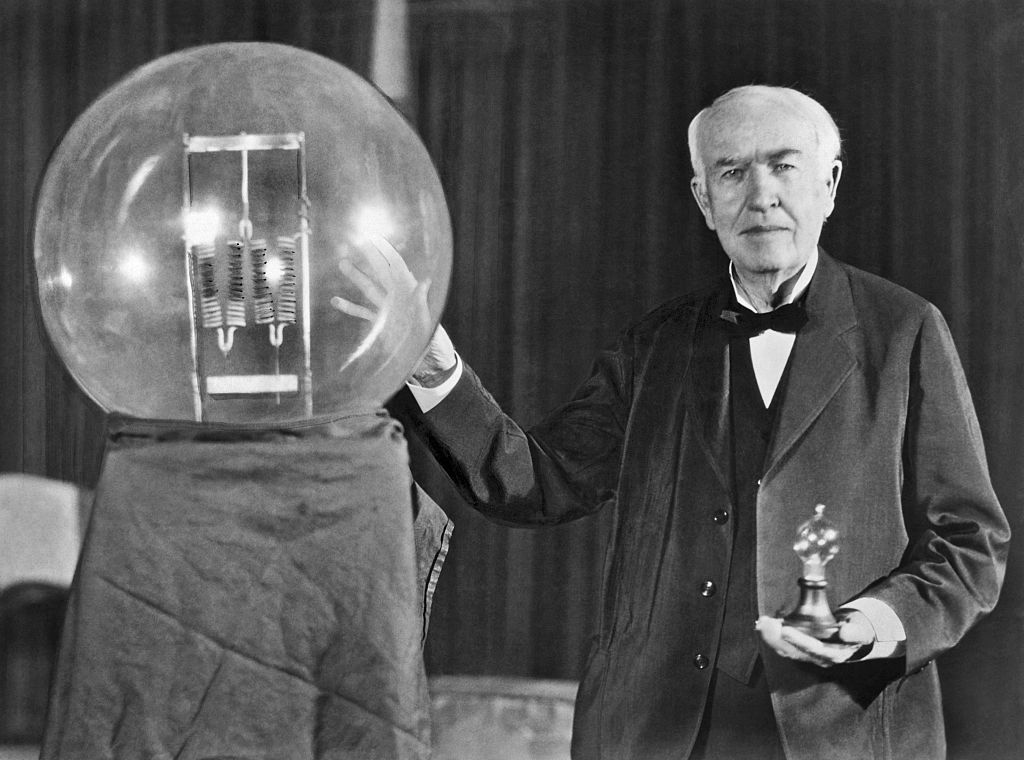Every day, Thomas Edison worked tirelessly in research of useful inventions. One of his research topics was how to increase his productivity and think more clearly. Napping was one method to get both: “I like working approximately 18 hours a day. Aside from the little naps I take throughout the day, I get about four to five hours of sleep per night,” Edison said.
He used his imagination to solve creative challenges during some of his slumber intervals, in addition to recharging his internal batteries. Sitting upright in a chair was essential for working naps. Sitting up made it more difficult for him to fall asleep completely, but it allowed him to stay awake for longer periods of time. He’d grip a steel ball bearing in each hand to make sure he didn’t fall asleep. A metal saucer would be placed on the floor just beneath his closed hand. If he fell asleep entirely, his hands relaxed and each ball bearing fell to the floor, striking the metal saucer and waking Edison up.

What had he been up to?
Thomas Edison used a technique known as hypnagogia. Hypnagogia is a state (or a set of states) that occurs as we try to hold on to consciousness while falling asleep. It entails physical relaxation as well as a loosening of the grasp of cognitive/emotive attention. We gain the benefit of emotional and cognitive wandering in hypnagogia. This roaming can be gently led, as Edison did, or left to its own devices. Guided wandering has the advantage of allowing us to maintain a topic of interest in mind so that we can view it from many perspectives and learn new things. Edison was serious about his business when he put up settings that allowed him to be in this state for extended periods of time.
Also Read – Ouija: The Game That Shouldn’t Be Played



